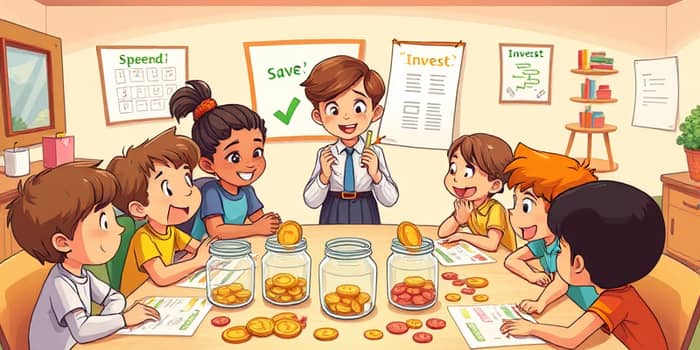
Understanding money is no longer an adult privilege; it's an essential skill for today's youth. With economic shifts and rising living costs, guiding children through financial basics can set them up for lifelong success. By introducing fundamental concepts early, parents and educators can nurture essential lifelong financial skills that shape confident, responsible adults.
Financial literacy is more than tracking allowance; it's about cultivating decision-making abilities that can prevent debt pitfalls, encourage saving habits, and foster investment interest. The sooner young learners grasp these ideas, the more adept they become at handling real-world financial challenges.
In recent years, financial literacy initiatives have gained momentum. As of 2025, 45% of high school students have taken a dedicated personal finance course, compared to just 31% in 2024. Across the country, 29 states now mandate standalone personal finance classes, though only ten have fully implemented youth financial education. This uneven progress underscores the need for consistent, high-quality programming nationwide.
Yet participation alone does not guarantee understanding. Course quality varies widely; while 64% of teens find their school's curriculum helpful, deeper evaluations reveal mixed results. Some programs rely on outdated materials or lack interactive components, leaving learners disengaged and underprepared.
Historically, the urgency of money management slipped through the cracks, with just 19% of adults reporting they studied finance in high school. Today, Gen Z leads the charge, with 35% having taken a course, compared to 24% of millennials and even lower rates among older generations. This shift presents a unique opportunity to eliminate knowledge gaps before they become lifelong obstacles.
Despite growing access, many teens still lack crucial insights. Alarmingly, 68% believe retirement planning can wait, and 43% consider an 18% interest rate manageable. A staggering 80% have never heard of FICO credit scores or understand their importance. These misconceptions can lead to poor borrowing decisions and missed opportunities for building a solid credit history.
Emotional factors compound these gaps. Nearly half of teenagers worry about their future financial stability, and three quarters feel unprepared by their education. Addressing emotional and behavioral barriers is as vital as teaching numbers. Confidence grows when young learners practice real-world scenarios, reducing fear and empowering informed choices.
Youth often view banking jargon as intimidating, which can discourage exploration. By breaking down complex topics into relatable examples—like comparing interest to extra cost on sneakers—educators demystify finance and spark curiosity.
Implementing engaging, age-appropriate activities can transform abstract concepts into tangible lessons. Embrace interactive approaches that resonate with young minds and build lasting habits.
By weaving these methods into daily routines, children develop an early positive money mindset that evolves with them. Consistency and dialogue are key—regular conversations about family finances reinforce lessons and spark curiosity.
Evidence shows that robust financial education yields demonstrated substantial positive outcomes for students. Students who complete a personal finance course are five times more likely to feel prepared for real-world money management. Exit exam scores often improve dramatically compared to control groups, reflecting meaningful knowledge gains.
Benefits ripple outward. Parents of educated teens report a 26% decrease in overdue bills and a 5% rise in credit scores. Interestingly, current debt levels may increase by 40%, but this often indicates healthy credit access critical for long-term economic mobility.
Amid record-high student loan debt exceeding $1.8 trillion, early literacy programs could be a preventative measure. By equipping youth with money management tools, we can curb future borrowing mistakes and foster a generation that approaches debt strategically.
Certain states illustrate the power of policy commitment. When programs are well-funded and supported, every student can access evidence-based curriculum across grades.
These examples demonstrate that coordinated efforts among schools, governments, and nonprofits can yield transformative results in student preparedness and family stability. Embedding standards at elementary and middle school levels ensures continuity and reinforces concepts over time.
Empowering kids with financial knowledge is a gift that compounds over time. From understanding interest to harnessing the habit of saving, each lesson paves the way for responsible adulthood. When parents, educators, and policymakers unite around this mission, we cultivate a generation capable of navigating economic challenges with resilience and creativity.
Let us commit to fostering warm and engaging teaching methods and championing programs that ignite passion and proficiency. By investing in our children's financial future today, we build stronger communities, reduce lifelong stress, and open doors to opportunity and prosperity tomorrow.
References





